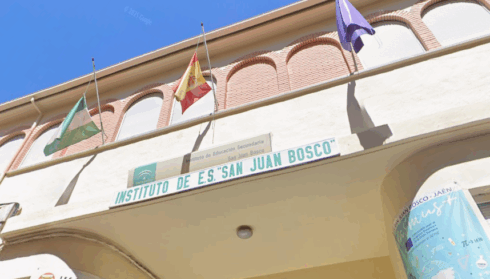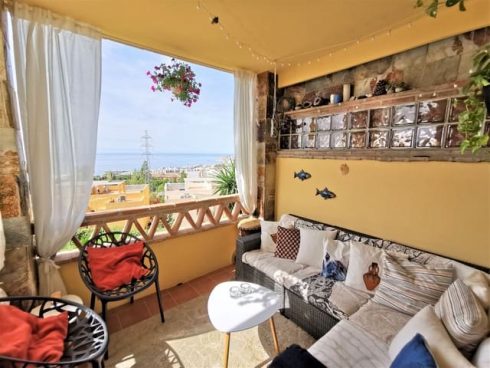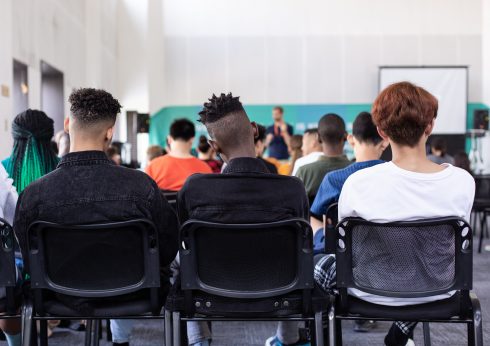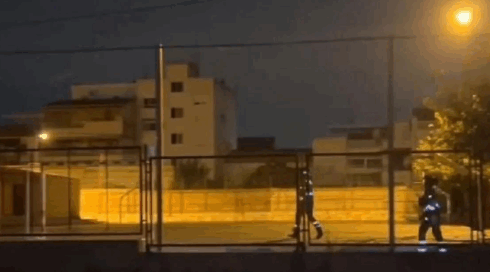WITH the holiday season winding down, tourists heading home and the nights drawing in, this can only mean one thing: the kids are back to school.
While most parents and children look forward to the ‘vuelta al cole’, and some can’t wait for the school gates to open, it can be a nerve-wracking experience for some families, especially if they’re new to the Spanish system.
Perhaps your primary-age daughter is shy about joining class, or your teen has spent most of the holiday lying in bed and it’s a major jolt to the system.
Many of you will have a child who isn’t fluent at Spanish and is worried about communicating with classmates.
Some students will be changing their school, which can be a life-changing decision. They might be switching from a state school to an international college, or a Montosorri or a Warldorf establishment.
Other students will be repeating an academic year, having failed to pass an exam or two in June, presenting a particular set of challenges for both the kid and parents alike.
Or, perhaps, you’re simply wondering where to obtain this year’s school materials without it costing a small fortune.
Whatever your child’s school circumstances this September (and most will have started last week, so they will be getting used to it by now) the Olive Press sets out to demystify ‘back to school 2022’.

What types of education are available in Spain
For parents who consider their children to be individual ‘square pegs’, who don’t fit into the ‘round holes’ of state education, based largely on continuous assessment and exams, there are alternative choices available throughout Spain.
There are 7,806 private schools in Spain, with 14,694 In the public sector…so roughly a third of the schools are independent.
Among other interesting official stats, with a 97.3% enrolment rate, there isn’t much homeschooling or truancy going on in Spain.
Meanwhile 9.9% of Spain’s pupils are foreign, while in Andalucia, 21% are educated outside the state system and in Valencia this rises to 25%, explaining why there are so many international schools on the costas, including many with French, British and American syllabuses.
International schools for a British syllabus
In the case of British schools, these offer Cambridge exams and allow pupils to take GCSEs and A-Levels.
Most offer an individualised learning plan, which wouldn’t be available in state schools and they are likely to have excellent purpose-built facilities.
They communicate with parents in their native language, making parent-teacher meetings a breeze.
International schools also provide a convenient pathway to enter the UK university system seamlessly.
They are a popular choice with parents who come to Spain for contract work, or a limited time only, and don’t plan to remain here – although this sort of working life has decreased with Brexit.
Parents can expect to pay from €10,000 to €35,000 per year, depending on whether the child boards at the school.
Parents will also have to buy uniforms and other extras for their children.
The Waldorf / Steiner system
Spain has over 70 Waldorf, or Steiner schools. Dating back to 1919 in Germany, they are based on the educational philosophy of Rudolf Steiner.
It is one of the world’s largest independent school groups and the educational style is holistic and is intended to develop the pupils’ intellectual, artistic and practical skills, as well as their imagination and creativity.
Under this system, teachers play a significant role in defining the curriculum and classroom methods. Assessments are integrated into the daily classroom activities and formal testing is limited to the actual requirements for students to enter post-secondary education, and not the continuous, formal assessment that occurs in a state school. Fees are from around €200 per month.

Montessori
Spain has various Montessori schools, with most big cities offering at least one.
Developed in the early 20th century by Italian physician, Maria Montessori, and based on scientific experimentation, the emphasis is on developing natural interests and activities, and on hands-on learning and real-life skills, rather than using formal teaching methods.
The idea is to encourage independence by supporting children to learn in a well-prepared environment and it discourages grades and tests.
Popular elements of this system include mixed-age classrooms, freedom of students to choose their own activities, uninterrupted work time, and specially-trained teachers. The cost can be from around €200 per month.
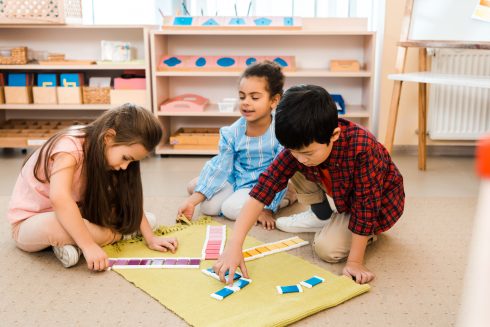
A parent’s view – state versus independent
Jenni Stephanides of Sevilla is both a parent and teacher, with one daughter attending a state school, while the other is at the international school where she teaches.
“Both girls started at the international school, as my husband and I work there. We were offered free places, which ensured the girls could continue their education in the British system, in case we decided to move back to the UK.
“But after three years, my eldest daughter was moved up a school year. Because of her birthday, she had been placed into the correct academic year for the UK, but not for Spain – this was holding her back educationally.
“My youngest meanwhile was placed into the correct academic year.”
“When we decided to stay in Spain, we gave both girls the choice to move to the Spanish system to integrate more with the local community. Both declined at the time.
“My eldest is about to start her final year and intends to attend university in the UK. However, my youngest moved to the Spanish system last year and thrived immediately.
“Now, she is fluent in Spanish, has achieved fantastic grades in her first year in the public system, and has many friends from the state system. My eldest stands by her decision to stay at the independent school.”
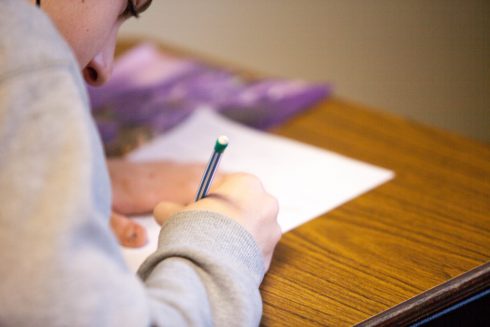
Peter Jones is the opposite. Both his children started their education in inland Valencia province at a state school from a young age and enjoyed it and thrived.
But as they entered their teens Jones, a businessman, who spends his time travelling around Europe, agreed with his wife and their children that they should try out a private school on the Costa Blanca coast.
The family felt that they would get more chances to excel in arts and music and, above all, meet a more international group of children, who would in turn ‘broaden their horizons’.
“It has definitely worked and they are both loving it, with the eldest taking her A-levels and planning a good university in the UK, while our younger daughter will probably do the international baccalaureate and go to university in Holland or Germany.”
He continued: “While it meant coming up with around €2,000 more a month, it has definitely paid off. They are completely bilingual and still friends with their old local pals, who, of course, are all planning universities, if at all, in Spain.”
I sent my son to a Steiner school
Olive Press reader Annabelle Grey insists her son, 10, has ‘grown in confidence’ after switching from state education to a Steiner school in the Granada region.
“In the international school, she had many friends from around the world, but the Spanish girls didn’t include her, and she wasn’t confident speaking Spanish.
“He really disliked mainstream school. He was quiet and introverted and felt that the other children received more attention because they demanded it of the teachers.
“Now he is seen and valued. When he first started, he wouldn’t speak in morning circle time – the first part of the day when children and teachers share their news and feelings. Now, he willingly shares each day. He has a noticeable sense of self-assurance, enjoys learning now, and discusses what he’s doing at school.”
The curriculum includes maths, English and languages, but they are taught in a visual way with stories and illustrations on the blackboard. And they are also learning geography, astronomy, botany, zoology, geometry, agriculture, music, noise mythology and more.
“Everything is taught in blocks of around 4-5 weeks, except for key subjects which are every week, so the children learn and explore many different things.”

STATE VERSUS PRIVATE EDUCATION
Pros
- Your child will be involved in your local community
- Their friends will live locally
- They will quickly be fluent at Spanish / bilingual
- There’s no need to transport your children to school
- It is free of charge
Cons
- Rigid structure based on continuous assessment
- Difficult for parents who don’t speak Spanish to understand what’s going on
- Not much creative learning, in terms of art, drama, etc.
- It is relatively easy for your child to repeat a year. Re secondary education, the repetition rate is 5.5% for state institutions combined to 1.4% for independent.
Private
Pros
- Cambridge exams are provided
- Caters for entry to UK universities
- International Baccalaureate entry
- The school is likely to occupy a beautiful setting, as you are paying for it!
- Individualised learning plan
- Constant contact with parents / participation in the learning experience
- Speak to educators in English
Cons
- The cost each year
- Paying for school uniform, that your child must wear
- Less immersion of your child in their local community
- Friends might live further away
- Child is less likely to be fluent at Spanish
- The need to transport children to school – possibly at a geographic distance
- The school holidays do not match Spanish holidays
READ MORE
How to motivate your teen for the new academic year in Spain
Time to SHINE: the school in Mijas with an open, welcoming and child-centred approach
Keep on growing: one year on and Shackleton International School is ready for a new intake of students
Click here to read more Education News from The Olive Press.




